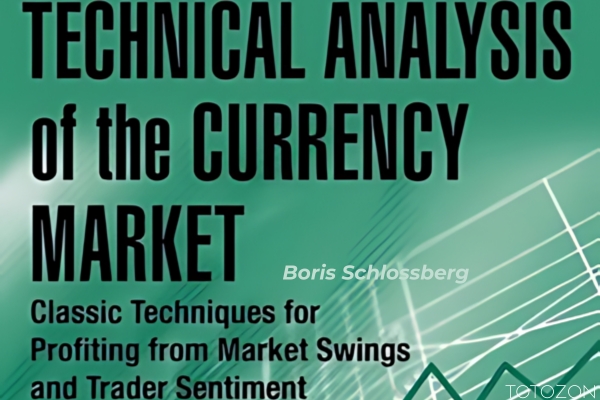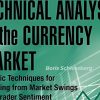-
×
 W. D Gann 's Square Of 9 Applied To Modern Markets with Sean Avidar - Hexatrade350
1 × $23.00
W. D Gann 's Square Of 9 Applied To Modern Markets with Sean Avidar - Hexatrade350
1 × $23.00 -
×
 The Naked Eye: Raw Data Analytics with Edgar Torres - Raw Data Analytics
1 × $8.00
The Naked Eye: Raw Data Analytics with Edgar Torres - Raw Data Analytics
1 × $8.00 -
×
 Options for Long Term Trading & Hedging with Option Pit
1 × $39.00
Options for Long Term Trading & Hedging with Option Pit
1 × $39.00 -
×
 Advanced Spread Trading with Guy Bower - MasterClass Trader
1 × $15.00
Advanced Spread Trading with Guy Bower - MasterClass Trader
1 × $15.00
Technical Analysis of the Currency Market Classic Techniques for Profiting from Market Swings and Trader Sentiment with Boris Schlossberg
$6.00
File Size: Coming soon!
Delivery Time: 1–12 hours
Media Type: Online Course
Content Proof: Watch Here!
You may check content proof of “Technical Analysis of the Currency Market Classic Techniques for Profiting from Market Swings and Trader Sentiment with Boris Schlossberg” below:

Technical Analysis of the Currency Market by Boris Schlossberg
Introduction
In “Technical Analysis of the Currency Market,” Boris Schlossberg delivers a masterclass on leveraging classical technical analysis techniques to harness the volatility of currency markets. This comprehensive guide dives into strategies that help predict and profit from market swings and trader sentiment.
Understanding Technical Analysis
Basics of Technical Analysis
Technical analysis involves statistical analysis of past currency prices and volumes to predict future market movements. Schlossberg emphasizes its pivotal role in identifying trading opportunities in forex markets.
Technical vs. Fundamental Analysis
While fundamental analysis looks at economic data, technical analysis focuses solely on price movements and trading volumes to gauge market sentiment.
Core Techniques in Technical Analysis
Chart Patterns
Schlossberg covers essential chart patterns such as head and shoulders, double tops, and flags, explaining their significance in predicting market movements.
Trend Lines and Channels
Learn how to draw and interpret trend lines and channels, which are crucial for understanding market directions.
Market Sentiment Analysis
Understanding Market Sentiment
Schlossberg delves into how trader sentiment can be deciphered through price actions and how it influences currency fluctuations.
Sentiment Indicators
Explore tools like the Commitment of Traders (COT) report and sentiment indexes to gauge the mood of the market.
Trading Strategies for Currency Markets
Swing Trading
Detailed strategies on how to profit from short-term price movements by capturing the swing highs and lows.
Breakout Trading
Techniques for identifying and trading breakouts that often precede significant market moves.
Risk Management in Forex Trading
Setting Stop Losses
Schlossberg advocates for strict risk management protocols, emphasizing the importance of stop-loss orders to protect investments.
Position Sizing
Understanding how to correctly size positions based on volatility and the trader’s risk appetite.
Leveraging Technical Indicators
Moving Averages
How to use simple and exponential moving averages to identify trends and potential reversal points.
Momentum Indicators
Utilize indicators like RSI and MACD to assess the strength of market movements and potential reversal zones.
Integrating Technical and Sentiment Analysis
Combined Approach
Schlossberg encourages a combined approach to harness the full potential of technical tools and sentiment analysis for more accurate predictions.
Case Studies
Real-life examples of how integrated analysis has led to successful forex trades.
Technology in Technical Analysis
Automated Trading Systems
Discussion on the use of automated trading systems that incorporate technical analysis for executing trades at optimal times.
Software and Tools
Recommendations for the best software and tools that enhance the technical analysis process.
The Future of Technical Analysis in Forex
Evolving Markets
How technological advancements and global economic shifts are shaping the future strategies of forex trading.
Adapting to Changes
Strategies to stay ahead in the ever-evolving currency markets by continuously learning and adapting.
Conclusion
Boris Schlossberg’s “Technical Analysis of the Currency Market” is an invaluable resource for anyone looking to deepen their understanding of forex trading through time-tested technical analysis techniques. By blending classical methods with a keen understanding of market sentiment, traders can enhance their ability to navigate the complex forex market.
Frequently Asked Questions
- What is the most reliable technical indicator according to Schlossberg?
- While Schlossberg does not single out one, he places high value on moving averages and RSI for their reliability and ease of interpretation.
- Can beginners in forex trading easily apply these techniques?
- Yes, Schlossberg’s methods are designed to be accessible, providing beginners with a solid foundation in technical analysis.
- How important is sentiment analysis in trading?
- Sentiment analysis is crucial as it helps traders understand the underlying emotions in the market, which can preempt major moves.
- What is the key to successful forex trading?
- Successful forex trading hinges on a robust understanding of technical analysis, effective risk management, and an ability to adapt to market changes.
- How can one keep up with rapid technological changes in forex trading?
- Continuous learning and using updated software tools are essential strategies for keeping pace with technological advancements in forex trading.
Be the first to review “Technical Analysis of the Currency Market Classic Techniques for Profiting from Market Swings and Trader Sentiment with Boris Schlossberg” Cancel reply
You must be logged in to post a review.
Related products
Forex Trading
Forex Trading
Forex Trading
Forex Trading
Forex Trading
Forex Trading
Forex Trading
Forex Trading
Forex Trading
Forex Trading





















Reviews
There are no reviews yet.